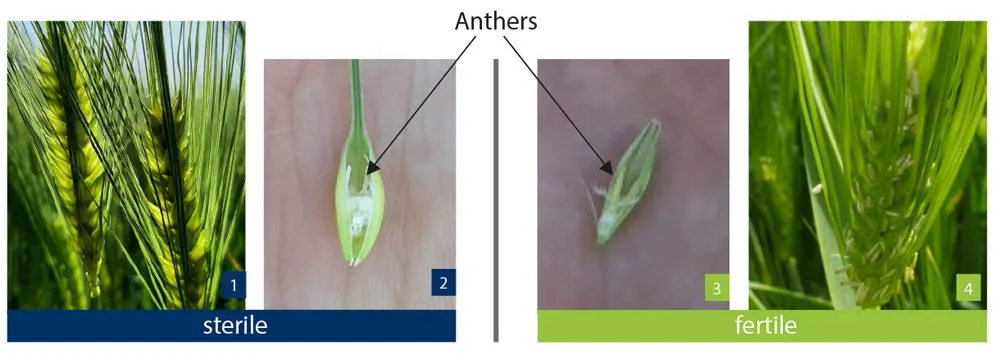Advanced Technology of Hybridization
Basically, hybrid barley results from crossing a female parent (male sterile) and a male parent. Barley belongs to the self-pollinating species. In order to avoid self-pollination of the female parent hybrid barley breeders are using a so-called CMS system.
CMS (Cytoplasmic male sterility) is the base for breeding and producing hybrid barley varieties. Almost 15 years ago our breeders established this system allowing SAATEN-UNION now to provide farmers with high potential hybrid barley varieties.
Breeding CMS Hybrid Varieties

Female plants with CMS are not able to produce fertile pollen. They are sterile. This guarantees that fertilisation is carried out by the pollen of the fertile male parent plant. The seeds harvested from the female parent after the crossing are fertile F1 hybrid seeds.
This characteristic is based on mutations that are inherited exclusively via the mother. Mutated genes are not found on the DNA in the cell nucleus but in the mitochondria of the cytoplasm. In other crops like wheat it was possible to cause female sterility by using chemical agents. Barley is not suitable for this technology. Until now the CMS system is the only way to breed hybrid barley varieties.

- Ear of a sterile female line with CMS
- Spikelet of a sterile female line with CMS: Sterile anthers which do not produce pollen.
- Spikelet of a fertile conventional barley line: Intact anthers which produce pollen.
- Ear of a fertile conventional barley line
